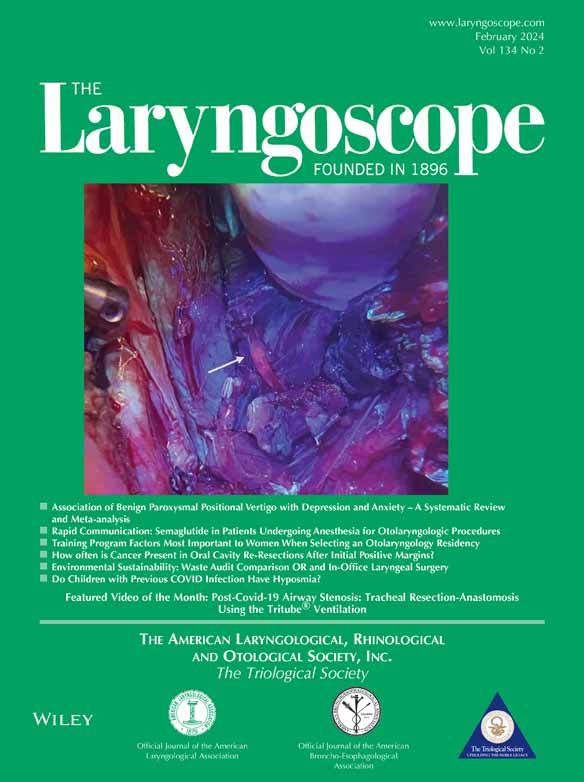Prevalence of Postpartum Depression in Mothers Presenting to a Pediatric Otolaryngology Clinic
The authors have no other funding, financial relationships, or conflicts of interest to disclose.
Abstract
Objectives
To further understand specific risk factors for the development of postpartum depression (PPD) amongst mothers of infants with common otolaryngologic diagnoses.
Methods
A prospective cohort study was performed to screen for PPD in mothers of infants presenting to the pediatric otolaryngology clinic. After obtaining consent for inclusion, subjects were administered the Edinburgh Postnatal Depression Scale, which was completed during the visit. The primary outcome measure was the rate of positive screening, with additional data obtained to include demographic and diagnostic information.
Results
The overall rate for positive PPD screening in included subjects was 18.8%. An increased rate of positive PPD screening was demonstrated amongst the subgroups of frequent noisy breathing (25%) and lip tie (26.7%).
Conclusion
This study provides additional insight into risk factors for the development of PPD. This highlights the potential benefit of increased screening within the population of mothers presenting to the pediatric otolaryngologic clinic, which could improve long-term health outcomes for both mother and child.
Level of Evidence
3 Laryngoscope, 134:973–976, 2024




